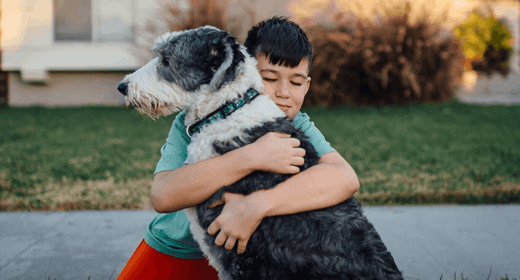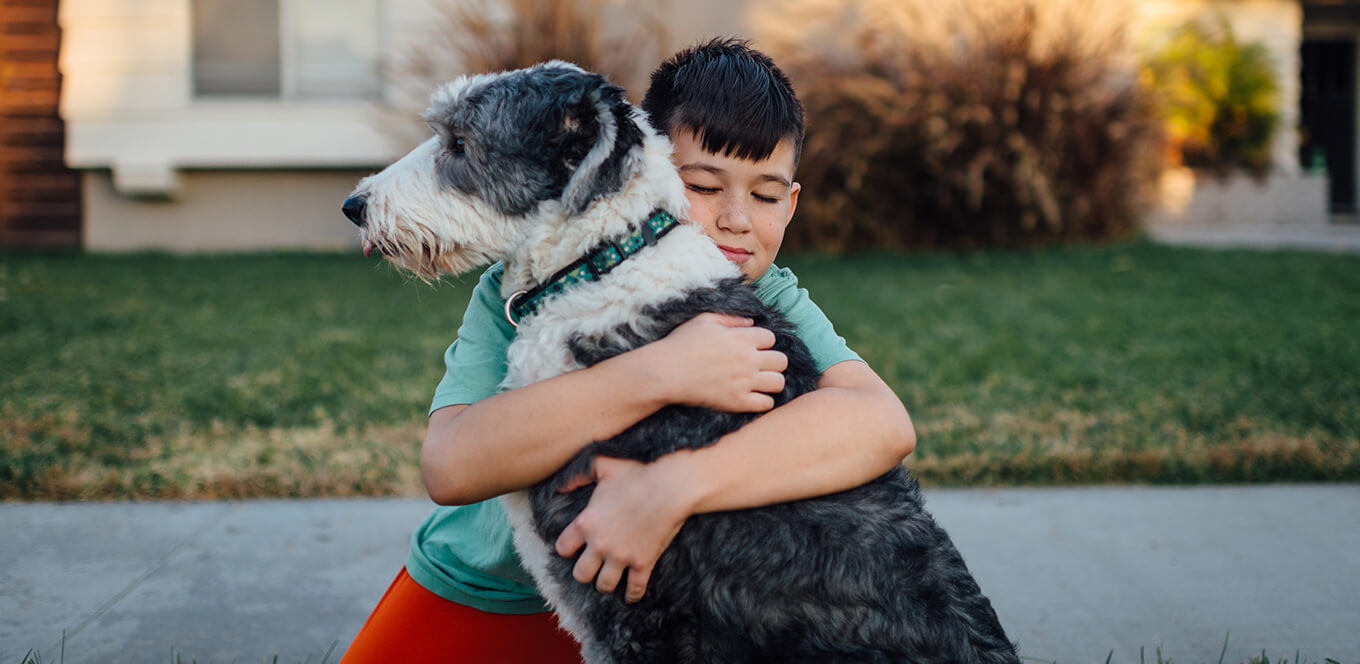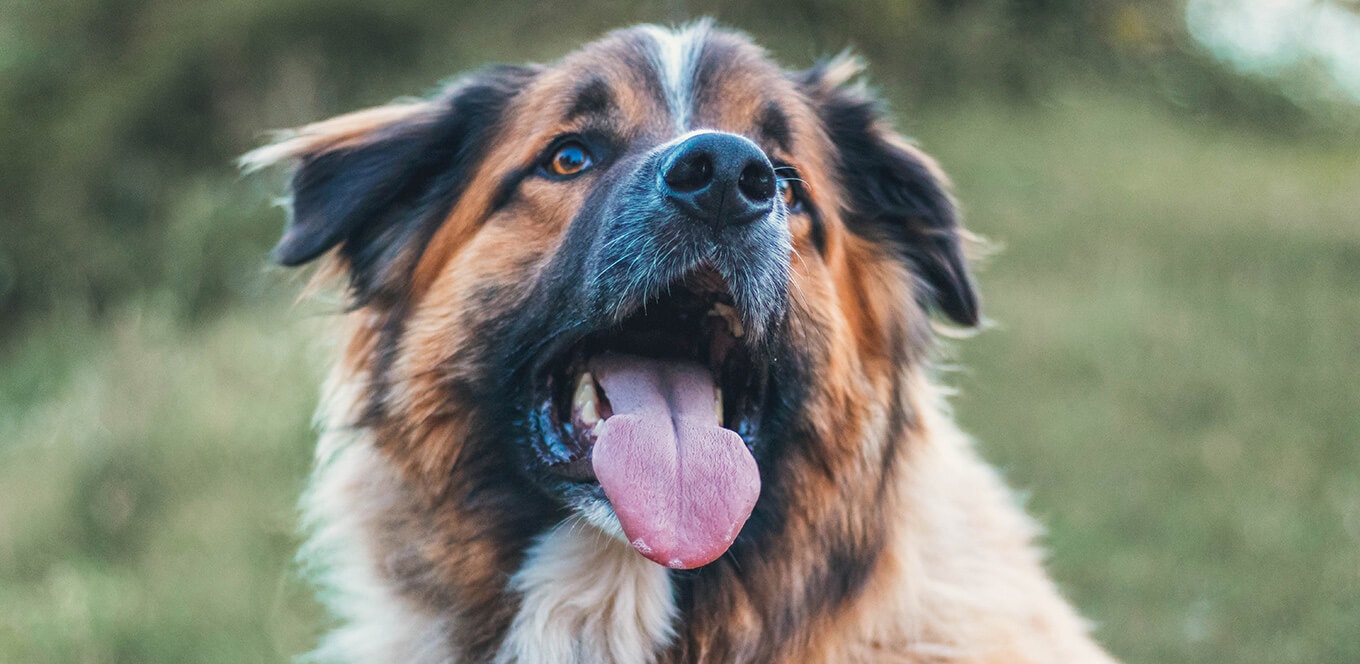

Healthy joints and proper weight are especially important for dogs that grow to be more than 50 pounds. But not all large- and giant-breed adult dogs have the same nutritional needs. Is your dog getting proper exercise? Is she about to have puppies? Special conditions can dramatically affect your dog’s nutritional demands. Giving her a food specially formulated for her large size, life stage and activity level is the easiest way to make sure she’s getting the nutrients she needs.
To address the special needs of your large- or giant-breed dog, look for these features:
These components are key to good nutrition. Look for them in treats, wet dog food, or dry dog food, such as IAMS™ ProActive Health™ Adult Large Breed.
Joint health is a big concern for owners of large- and giant-breed dogs. A large- or giant-breed formula that contains high-quality protein can help nourish healthy joints. Vitamins and minerals help promote the production of cartilage. Also, keeping your dog at a healthy weight will help minimize joint stress.
Dogs with lower activity levels and dogs that have been neutered or spayed are all prone to weight gain. Controlling your dog’s weight is an important step toward protecting against the health effects of excess weight, such as diabetes or joint health problems. If you use a weight-management food, look for these characteristics:
Pregnant dogs have substantial nutrition requirements. Starting in the seventh week of her pregnancy, a mother dog will need to increase her energy intake up to 50% by the time she gives birth and increase it even more when she starts nursing her puppies. Because she may lose her appetite at times, it's important that she eats a nutrient-dense food. A complete, balanced puppy formula can give her the extra nutrients she needs. But avoid puppy food created for large and giant breeds; these formulas contain specially adjusted levels of energy and minerals that may not be sufficient for a pregnant or nursing dog.
Dogs who grow to be more than 50 pounds are considered mature or senior at age 5 or 6, which is earlier than small-breed dogs. So, it’s critical to make a proactive transition to a specially formulated mature diet, such as IAMS™ ProActive Health™ Mature Adult Large Breed, to help keep your dog healthy and active as she ages.




Leash training can help your puppy safely explore the world beyond your house or backyard. It can enhance your dog’s walking experience and help you bond with it better. We must remember that dogs are not born with the ability to walk on a leash, they need to be taught. As their caregivers, we need to help them learn this skill comfortably.
If you have a large breed pup, it is imperative that you train it while it is still young. Once your fur baby grows up to be heavy, you will have a tough time handling it on a leash. You do not want to be dragged along the ground or see your dog get into an easily avoidable fracas.
In case you are wondering at what age to start leash training a puppy, here’s your answer: You are start at 10 weeks of its age, however, you must know that it can be done earlier. It will help your pup grow into an obedient pawsome pal. Leash training also makes it easier for you to travel with your pet and embark on exciting adventures seamlessly! Train your puppies while they are still young as it will stay with them for the rest of their lives.
If you are facing any trouble with how to teach your puppy to walk on a leash, here are some tips to get you started:
Picking the right collar is the first step to getting your dog used to a puppy leash. It is imperative that your fur baby feels comfortable in it. So, make sure that the collar is neither too tight nor too loose; there should be space for at least two fingers under it. While leash training your puppy, breathability and comfort is of paramount importance.
Note: If you plan on training your puppy at an early age, stay attentive during sessions. Since your little furry friend will be at a developing stage, it will outgrow its collar soon. Make sure that you keep checking the fit of the collar and change it as and when needed.
Your puppy will need some time to get used to the leash. For puppies, this is an alien thing, and they will need some time to adjust and accept this new accessory. You can help your pup ease into this process by trying a few tricks. It needs to resonate a leash with fun times. Let it spend some time playing with the leash. You can also make your canine companion wear it every time you are having a fun time together at home. Do not put it on when it is alone, sad, or irritated.
As you teach your puppy how to walk on a leash, remember that rewarding it with treats will only promote good behaviour. Grab a treat in your hands and take a few steps back. This will encourage your pooch to walk towards you to devour its favourite treat. To avoid overeating, you can also reward the pup with toys, praises, or belly rubs.
Note: Do not stretch your dog’s leash training for prolonged hours. It might get exhausted and shy away from training.
Indoor practice is the best way of gauging how your canine companion fares with the concept of walking on leash. This will also help you get your puppy used to the leash without losing control of it. Choose a decent stretch of floor in your home, make sure there are no obstructions, and just start walking with your puppy on a leash. At the end of one stretch, reward it with treats. Stay attentive during these session to know when your pup is ready for the world outside your home.
Teaching your puppy how to walk on a leash is going to be full of surprises. If you think that your pet will easily walk on a leash outdoors once it has learnt to do it indoors, you are mistaken. Being curious is only natural and that is exactly what will happen once your four-legged friend realises that it is not at home anymore! Your dog will want to sniff every corner, every plant, and whatever it sets its eyes on. Hence, start with short outdoor walks!
Note: Carry some treats with you to encourage your puppy to follow you!
Remember that patience is key! And your furry friend is not the only one who needs to be patient during this process. Your puppy is going to need some time to get used to this walking style and you need to give it that time. Moreover, make sure that this transition is smooth and comfortable for your pup. Once you start putting these tips into action, you two can start taking long strolls together.